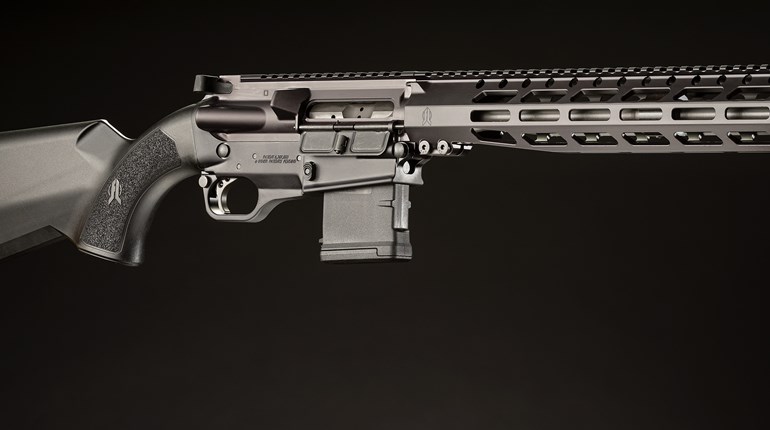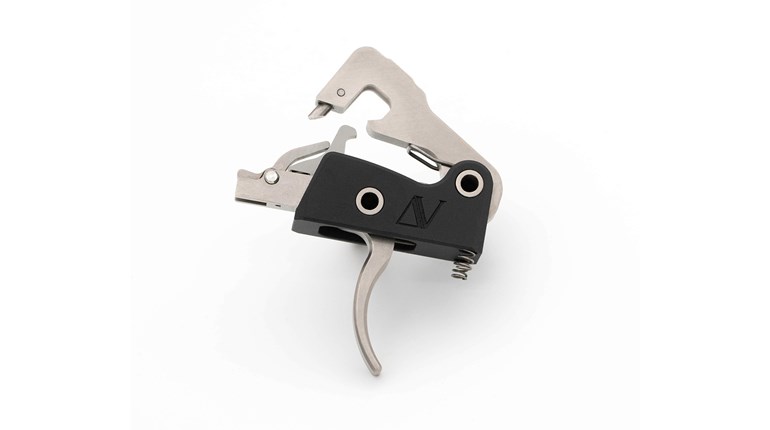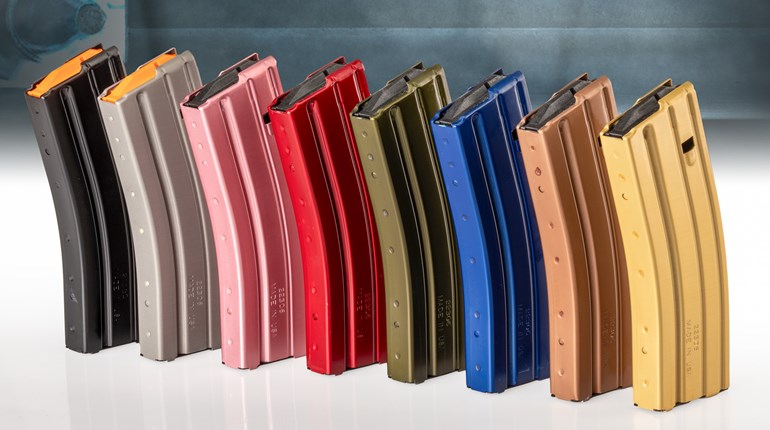
We’re working on a “build” PCC carbine in 9 mm, and we’ve arrived at a fairly crucial choice—how we’ll drive the carbine by selecting a recoil spring and buffer system.
As designed, Stoner-pattern rifles use rotating lugs and a weighted buffer/spring system to hold the action closed until after the projectile passes the gas port juuuuust prior to leaving the barrel. Gas pressure feeds back to unlock the lugs on the rotating bolt, and subsequently drives the bolt/carrier assembly rearward to eject the spent cartridge. When the buffer mass and spring have absorbed the remaining kinetic energy (actually stored it, via the recoil spring), they start the kit-and-caboodle forward again. This recharges the rifle by peeling a round off the magazine, chambering it and camming the lugs closed once again.
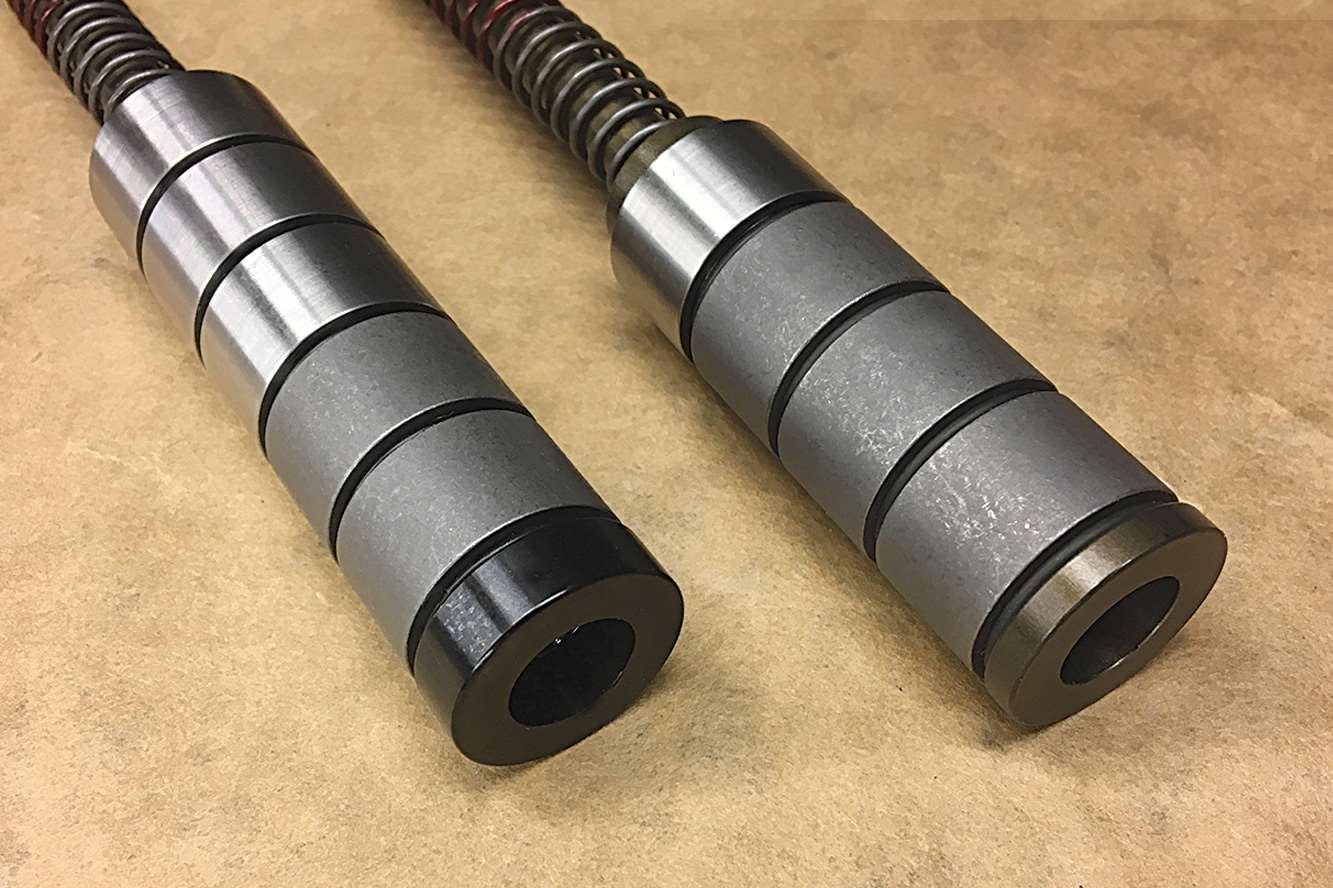
Most PCCs dispense with the gas drive part of this system—no barrel port, gas block or tube, nor any rotating, lugged or camming bolt. They get away with this because the operating pressure of pistol cartridges doesn’t require the strength or complexity of such a system. “Blowback” instead predominates. Here, mass alone holds the action closed long enough for the bullet to exit the barrel, and for chamber pressures to fall to safely vent-able levels.
This brings both expected and unexpected advantages to the fore—fewer total parts is of the first type, and greater tolerance of ammunition power levels is of the second. Both are of interest for our “build” considerations.
Rifle caliber cousins of PCCs start with bolt and bolt carrier around 13 ounces, a round-wire spring and 3.8-ounce buffer in the buffer tube. For blowbacks to function, a notably heavier bolt/bolt carrier assembly and buffer go into these positions. While the overall travel may not be that different at normal pressures for each system, the amount of moving mass is.
This translates into quite different perceived levels of gun movement in recoil. The comparatively narrow operating range of gas systems tend to make them seem “smoother,” though this is more accurately “consistent.” When sufficient gas is present to drive their mechanics, they feel much the same unless ammunition power levels vary fairly substantially.
The larger amount of moving mass in blowback systems does the rough opposite, with bolt/carrier movement in comparatively direct proportion to ammunition power (and un-moderated by other aspects of gas system mechanics). This makes them soft and quick-acting as long as there’s enough pressure to open/cycle the action (even if just barely), but heavier recoiling—sometimes more than rifles—when more powerful ammunition gets the larger bolt/carrier/buffer mass moving a longer distance, at higher speed, and halting somewhat more abruptly. It’s no surprise that dedicated PCCers have long tuned their recoil systems to balance these factors depending on their tastes, personal dynamics and the shooting task at hand.
If the whole business is starting to smack of unsolvable complexity, we sympathize. We’re pretty sure the count of combinations we’ve tried exceeds 20—springs from standard round wire to AR10-weight flat wire, and buffer weights up to 10.5 ounces. Most work, and a couple—especially for very heavy bullets with very fast powders or very light bullets with slower powders—were exemplary. The “bounce” of fast-running blowbacks can be cut to impressively small wriggles. We know of a fella routinely getting .10 to .11 splits in a blowback rig, with hits essentially on top of each other—“blazing,” we believe, is the technical term.
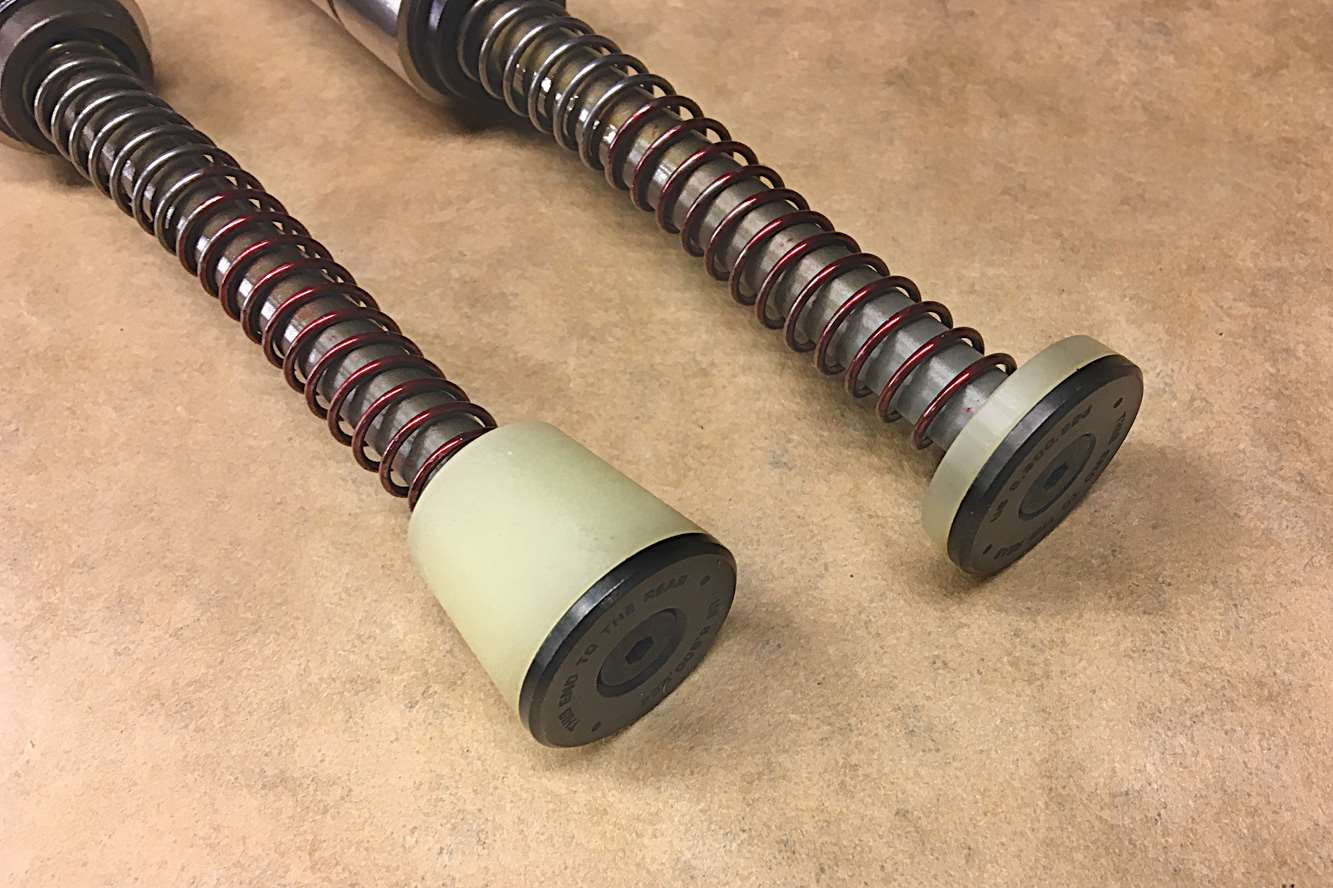
But knocking most of the range of variation down to size—and especially if we’re after the best performance over the widest range of ammunition—is how we arrive at the JP Silent Captured Spring system as a serious contender for this slot in a build.
To the “silent” business first: Whenever you were new to a Stoner-pattern rifle, the “ka-whang” of the standard buffer/spring configuration right under the shooting-side ear with every shot was impossible to miss. Weird, unexpected, annoying, even; but not exactly a technical fault. That said, it isn’t an asset, either, except in terms of being inexpensive. The originals—pistol or otherwise—never did move with noted smoothness or consistency, and it didn’t take long to discover that the round wire springs could have surprisingly short lives. That can be a technical fault, and interfere with reliability well past the point of annoyance. Maintenance did and will keep the big failures at bay, but optimized? Bwahahahahaha.
JP’s replacement system doesn’t stop with better tolerances inside the buffer tube, with zapping the “ka-whang,” nor even with swappable springs sets—to these credits, it adds interchangeable weights in both tungsten and steel. These can be swapped on and off the guide rod at the heart of the unit, and tune the speed of your system to compliment ammunition and other preferences. A cut-to-fit spacer (which accommodates different length buffer tubes) and two different “bumpers” (to halt rearward weight travel without slamming as well as to adjust overall stroke length) allow even more dialing in.
But perhaps the best news is this: For 9 mm systems, there are two variants, and this (pages 5 and 6 for 9 mm) will provide superb direction as to which is more suitable for the endgame of your build. Fabulous for tinkerers it’s true (ummm, ahhh, us, in other words) but chances are, you won’t have to do one darn thing to the one you choose.
Sure nice to know you can, though.
Find JP products here; JP carbine “SCS” systems range in price from $160 -185.
Editor’s Note: JP SCS buffer systems are not compatible with all PCC bolt carriers. While most can be modified, we’ll take a look at alternative systems to tune recoil with these “weighted,” solid-backed bolt carrier systems.
Frank Winn has been studying arms and their relationship to tyranny, meaningful liberty and personal security all his adult life. He has been a firearms safety/shooting instructor for more than 20 years, and earned state, regional and national titles in several competitive disciplines.













